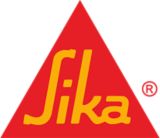2025
Transportation
3D Printing and Adhesive Bonding are Revolutionizing Ultralight E-Bike Construction
Aluminum and carbon frames may be lightweight, but they are also costly to produce. Whether it’s time-consuming welding and rework or capital-intensive tooling equipment, these added costs can amount to more than one-third of the final retail price of a typical lightweight e-bike.
Together with Sika, a growing mobility startup decided to pioneer a new path forward, combining 3D-printed titanium and adhesive bonding.
Groundbreaking Production and Assembly Technology
Lighter, more stable, and fully repairable, titanium frames produced bythe latest production techniques are setting new industry benchmarks in e-bike design. Weighing just 30 pounds (13.8 kg), one particular e-bike is the world’s first titanium example with an in-tube battery.
Unlike aluminum frames, titanium bike frame requires zero welding or rework.
Unlike carbon frame constructions, titanium opens up entirely new possibilities for innovative designs and material recycling – all made possible thanks to a breakthrough manufacturing technique designed in collaboration with Sika.
3D Printing and Cutting – High Effiency and Sustainability Enabled
The titanium lug sets for 20 bike frames can be 3D printed in just 24 hours. Each frame’s tube set can be cut in just five minutes, reducing the manual labor required for component production to a bare minimum.
To reduce waste, top tube off-cuts are used for other parts, such as the frame’s titanium fork.
2-Minute, Weld-Free Assembly - How?
Key to the titanium frame’s ultralight design is the extremely minimal wall thickness of all titanium parts.
The 3D-printed lugs, for example, range from 0.4 to 0.9 mm in wall thickness, while the hydro-formed tubes are just 0.5 mm thick. Because these titanium wall dimensions are too thin to be welded, the entire frame is assembled according to a plug-in principle that takes just two minutes to complete.
5-Minute Adhesive Injection
All of the titanium frame plug-in connections have been carefully calculated with a geometrically designed adhesive chamber.
A two-component SikaPower® structural adhesive, adapted from many years of proven performance in car body construction, is injected through a small 1 mm aperture.
This innovative bonding process, which takes just 5 minutes per frame, is the result of thorough analysis and process optimization using multiple iterations of 3D printed plastic prototypes.
Fully Automated Surface Finishing + Real-Time Quality Control
Finally, the assembled titanium bike frame undergoes fully automatic surface post-processing, followed by quality control measures. Because the adhesive device and structural design are carried out according to strict error-proofing principles, human errors are completely eliminated from the bonding process.
Together, engineers, Sika’s structural bonding specialists, and frame testers at the Zedler Institute of Bicycle Technology and Security have ensured the frame can be quality-controlled, according to all relevant standards, in real time.
Circular Design for Easy Repair and Recycling
In total, just 80 grams of structural adhesive are needed to bond the entire 2.5 pound (1.2 kg) frame. If the frame is damaged, the adhesive points can be treated with selective inductive heating - up to 300° C - for disassembly and repair.
The same process can be used to remove and recycle up to 98% of all pure titanium components at the end of the frame's lifecycle.
Compared with aluminum and carbon frame constructions, VER-TEC process technology overcomes many of the barriers to profitable e-bike production. In addition to enabling near-shore and domestic production, 3D printing offers the freedom to optimize and evolve designs without the costly re-tooling associated with carbon constructions.
“We’re already planning for production of the first 3,000 frames and expect the first model to retail for under 6,000 EUR, which is remarkable for a bike of this quality and weight class,” says the company's CEO.
“But the advantages go beyond cost efficiency. As a designer, it’s amazing to have the freedom that 3D printing gives you. We can quickly adapt the designs. We can work on new e-MTB models. And the same concept can be adapted to cheaper materials, since you can bond with plastics, composites, and different metals."
"And even better, we can do all of this together with Sika locally — without any offshoring of production.”
""
Move Forward with Adhesive Bonding
What can adhesive bonding do for your business?
Because every customer challenge is unique, Sika is heavily invested in the local presence of application engineers and design engineers in more than 100 countries to support the entire customer journey, from the initial design phase to final industrialization.
Starting with a cost assessment of your designs and processes, we apply a fully data-driven approach to the transition to adhesive bonding. From identifying design issues to expert lab testing, technical process support, implementation, validation, and training, we’re with you every step of the way.
Together, we can develop the right opportunities to move your business forward.
Discover How Sika’s Adhesive Bonding Solutions Can Move Your Business Forward
One Hour of Manual Labor with VER-TEC Frame Construction
- 97% time savings, compared with carbon frame construction
- 93% time savings, compared with aluminum frame construction
Advantages of VER-TEC Frame Construction
- Labor savings: Massive reduction in manual labor
- Low tool costs: with 3D printing and adhesive bonding
- On-demand, just-in-time production: for near-shoring
- Design freedom: Nearly unlimited design freedom with 3D printing
- Recyclable components: 98% of titanium can be recycled today (if pure)
Sika Support – From Idea to Final Industrialization
- Design and process cost assessment, comparing welding to adhesive bonding
- Technical documentation to support design and simulation
- Project-specific surface, material, and durability testing
- Support for implementation and validation on the right equipment for efficient processes
- Tailored customer application trainings
- Production line audits
- Individual customer support

